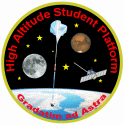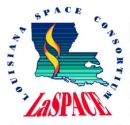



Payload 02 Information
Payload Flight Number:
Institution:
Payload Title:
Measurement of the ozone profile in the stratosphere using nanocomposite sensor arrays and chemical sensitive thin film transistors on a high altitude balloon platform.
Student Leader:
Faculty Advisor:
Payload class:
SMALL
Payload ID Number:
02
Mass:
2000g
Current:
350 mA
Serial Downlink:
Analog Downlink:
Serial Commands:
Discrete Commands:
Payload Specification & Integration Plan
Due: 06/01/2011
Delivered:
Payload Integration Certification
Scheduled: 08/05/2011
Actual:
Flight Operation Plan
Due: 07/31/2011
Delivered:
Final Flight / Science Report
Due: 12/16/2011
Delivered:
Abstract:
The UND and UNF team have successfully flown payloads on both the HASP 2008 and 2009 balloon flights for the purpose of measuring the ozone gas profile in the stratosphere. The nanocrystalline ITO thin film gas sensor array developed by UNF was used for the detection of the ozone gas profile, while the signal conditioning and microcontroller circuits developed by the UND team were used in the ozone sensor payload. HASP 2010 payload successfully cleared all the required thermal vacuum tests and is waiting for the flight. Based on the success and the few known problems of these payloads, the UND-UNF team proposes a HASP 2011 flight for the verification of earlier data using improved versions of the sensors and payload. Two different groups of ozone sensor arrays: (i) nanocrystalline nanocomposite ITO and (ii) chemical sensitive thin film transistor gas sensors on glass substrates will be used for the comparison of sensitivity, speed of response, and stability of the sensors. In addition, GaSb or Sb2Te3 thin film pressure sensors will be fabricated and calibrated and included in the payload to measure the change in pressure with change in altitude. The UNF team invented nanocomposite gas sensor arrays and chemical sensitive thin film transistors, which show better sensitivity than that of ITO sensors on glass. Both groups of ITO sensors for ozone will operate at temperature about 30 oC and need no high temperature heater, unlike other metal oxide sensors, which may conserve electrical power. First, UNF sensors will be calibrated with ozone gas at UNF, and then at UND labs for cross verification. Then, UNF sensors will be integrated into the UND electronics package to complete the payload. Both teams will jointly analyze the data after the flight. Furthermore, the surface topography of the sensors before and after the flight will be studied using a scanning electron microscope, and the chemical composition of the surface of the sensors will be analyzed by energy dispersive analysis of x-rays at UNF. This student project may be supported by both North Dakota and Florida Space Grant Consortia. |